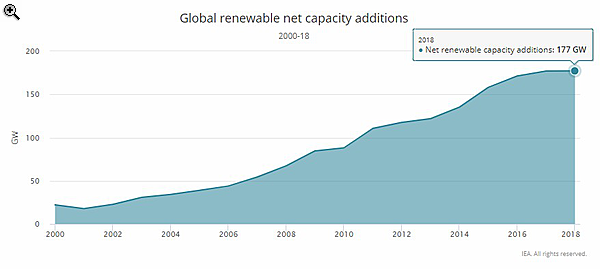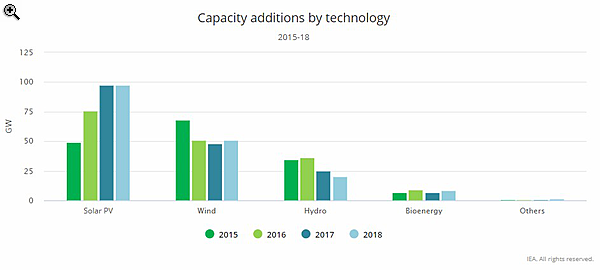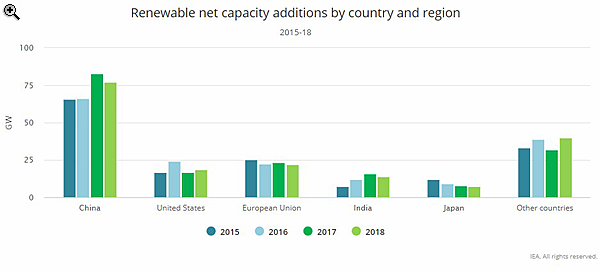Economy
Renewable power capacity stalls for 1st time since turn of millennium
The current situation and prospects of solar energy in Hungary, including changes to the regulatory environment will also be on the agenda of the Portfolio Clean Energy & Disruptive Trend Summit 2019 conference on 4 June. It’s not too late to register!
Last year was the first time since 2001 that growth in renewable power capacity failed to increase year on year. New net capacity from solar PV, wind, hydro, bioenergy, and other renewable power sources increased by about 180 Gigawatts (GW) in 2018, the same as the previous year, according to the International Energy Agency’s latest data.
That’s only around 60% of the net additions needed each year to meet long-term climate goals.
Renewables have a major role to play in curbing global emissions. Renewable capacity additions need to grow by over 300 GW on average each year between 2018 and 2030 to reach the goals of the Paris Agreement, according to the IEA’s Sustainable Development Scenario (SDS).

Since 2015, global solar PV’s exponential growth had been compensating for slower increases in wind and hydropower. But solar PV’s growth flattened in 2018, adding 97 GW of capacity and falling short of expectations it would surpass the symbolic 100 GW mark.

Capacity additions in the European Union, the second-largest market for renewables, saw a slight decline. Solar PV grew compared with the previous year, while wind additions slowed down. Policy transition challenges and changing renewable incentives resulted in slower growth of onshore wind in India and of solar PV in Japan.
Renewable capacity expansion accelerated in many emerging economies and developing countries in the Middle East, North Africa and parts of Asia, led by wind and solar PV as a result of rapid cost declines.


The current situation and prospects of solar energy in Hungary, including changes to the regulatory environment will also be on the agenda of the Portfolio Clean Energy & Disruptive Trend Summit 2019 conference on 4 June. It’s not too late to register!>
Cover photo by Shutterstock
Cover photo by Shutterstock
More in Economy
April 04, 2025 15:33
Hungarian Two-Tailed Dog Party allowed to hold Million Marijuana March
Curia overrules police ban
April 04, 2025 14:45
Hungary gives ultimatum to telecom sector
EcoMin give service providers a week to comply
April 04, 2025 13:12
Expert says Hungarian fuel prices might jump HUF 100 per litre
If Donald Trump's threat to Russia comes true
April 04, 2025 12:35
Hungary's Orbán vows law change to combat protests against curtailed right of assembly
He also expects a gradual acceleration in growth in the face of dismal industrial production data
April 04, 2025 09:52
Hungarian gov't launches HUF 40 billion bioenergy support programme
The aim is to promote biogas and biomethane production
April 04, 2025 09:37
Neighbouring countries step up security measures to counter the spread of FMD
Serbia introduces disinfection points at border crossings, while Austria closes down several
LATEST NEWS







